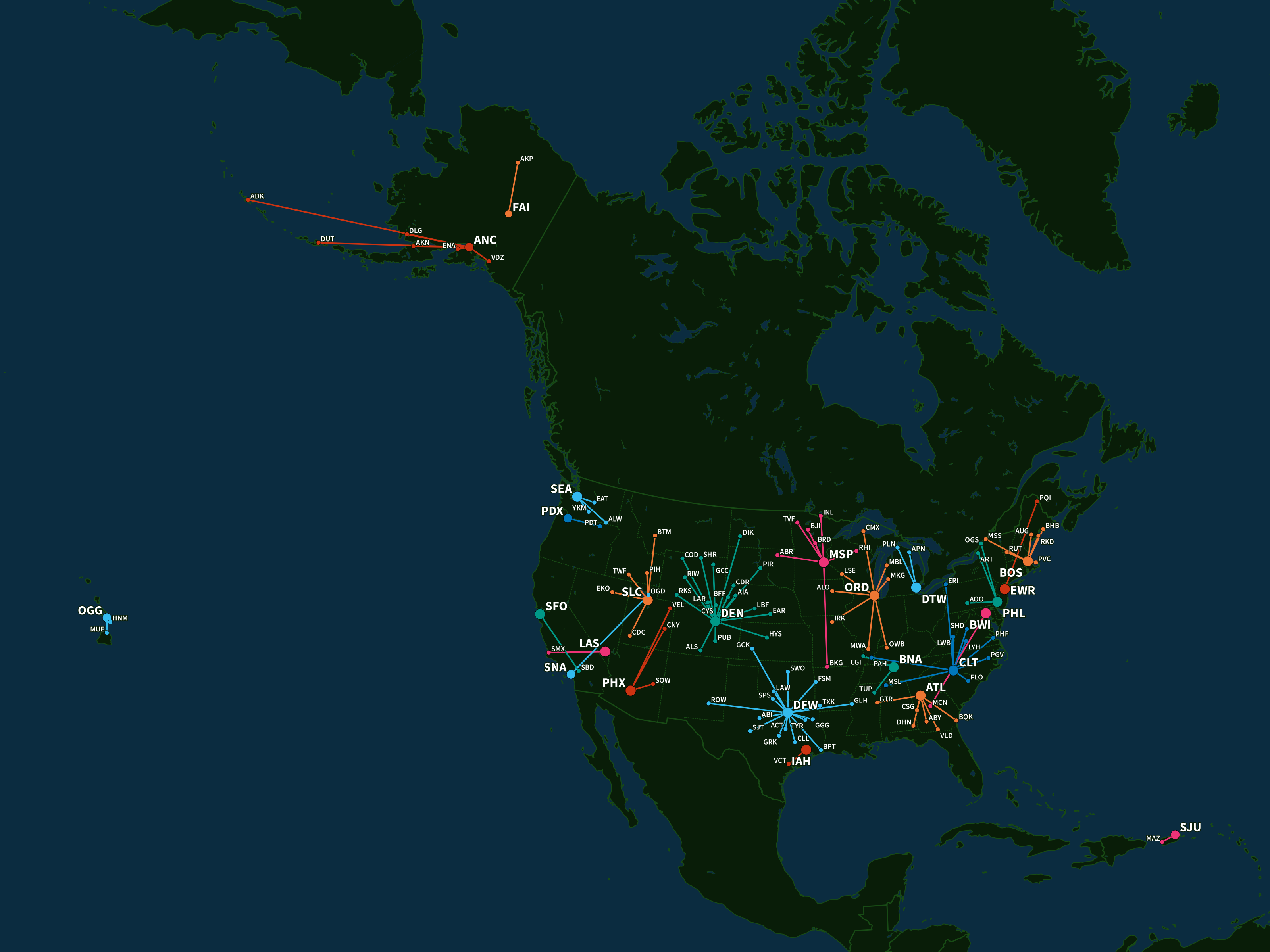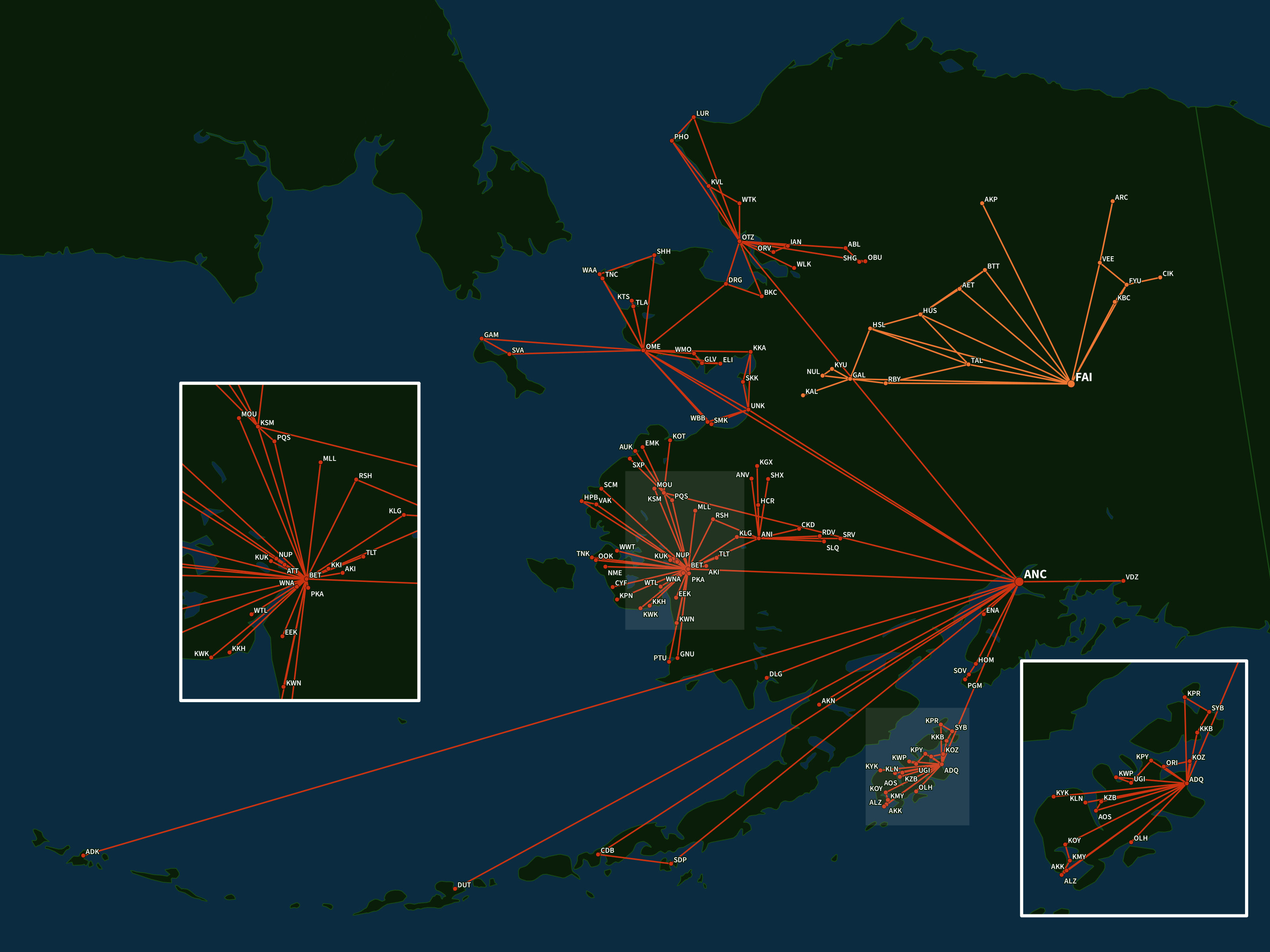
U.S. Hubs and the Airports that Connect Only to Them. Every US airport whose only scheduled commercial service is to a single hub, as of 22–29 June 2024. (Click on map for full size image.)
In the early 2010s, I spent a lot of time in Abilene, Texas. Abilene’s airport (ABI) has several flights a day back and forth to Dallas/Fort Worth (DFW), but doesn’t have scheduled airline service to any other airport, so every time I flew to ABI I had to connect through DFW.
Recently, I’ve been thinking about other small airports in the same situation—where their only commercial service is to a single hub—and how a collection of such airports could be considered a hub airport’s exclusive territory. Using data from the FAA,1 FlightConnections,2 and OurAirports,3 I created the map shown above to visualize which airports belong only to each hub.
There were a few cases where some airports only connected to a single other airport, but they weren’t included because the airport they connected to didn’t meet the FAA’s definition of a hub. Within the contiguous United States, Billings (BIL) was a notable example, being the only connection for five small Montana airports. Alaska also had quite a few of these, with an extensive collection of small airports connecting inaccessible-by-road towns.
Single-Hub Networks
Some airports formed a small network with a hub; for example, there are flights from the hub of Denver (DEN) to DVL to JMS back to DEN. Airports like DVL and JMS weren’t included on the first map because they each had flights with two airports (DEN and each other). However, they both had to fly through DEN to get to the “outside world” (e.g., any hub other than DEN).
The networks were even bigger in some places. As mentioned above, Alaska in particular has extensive networks of flights between tiny airports—but some of those networks only connect through a single hub.
In the same way that individual airports could belong to a single hub, these networks could belong to a single hub. To show this, I also created a map of each hub’s networks, as well as a zoomed-in version detailing Alaska’s hub networks:

U.S. Hubs and the Airport Networks that Connect Only Through Them. Every US airport whose only scheduled commercial service connection to the outside world is through a single hub, as of 22–29 June 2024. (Click on map for full size image.)

Alaskan Hubs and the Airport Networks that Connect Only Through Them. Every Alaskan airport whose only scheduled commercial service connection to the outside world is through a single hub, as of 22–29 June 2024. (Click on map for full size image.)
(Note that all of the airports from the first map are also included here, since by definition they can’t get to the outside world without connecting through their hub.4)
-
For this post, “Hub Airports” are airports which meet the FAA’s definitions of Large, Medium, or Small Hub using CY 2022 Enplanements data (the most recent final dataset available at the time of map creation). ↩︎
-
Data about which airports have flights between them comes from FlightConnections for the week of 23–29 June 2024. ↩︎
-
Airport latitudes and longitudes come from the airports.csv dataset on OurAirports. ↩︎
-
In graph theory terms, they’re connected components with an order of one. ↩︎